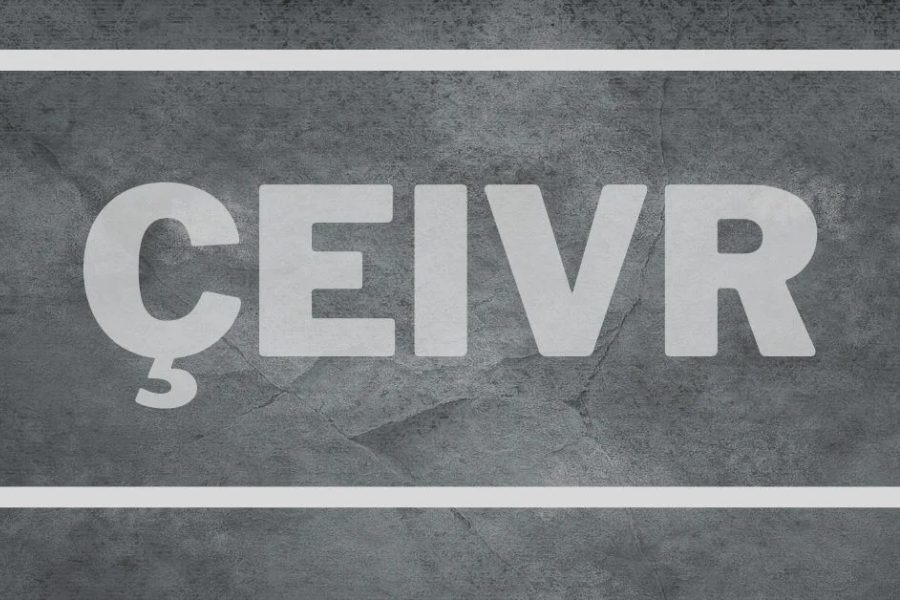Have you ever wondered how your favorite book, app, or movie became accessible in another language? That’s where the art of translation and localization, known in Turkish as “çevir,” comes into play. Translation is more than just swapping words from one language to another; it’s about adapting content to make it resonate on cultural and contextual levels with audiences around the globe. In today’s interconnected world, translation and localization hold tremendous importance as they bridge cultural gaps, foster understanding, and open doors to new markets.
The Rich History of Translation
Early Beginnings
Translation dates back to the earliest civilizations. Ancient societies like the Sumerians and Egyptians recognized the need for translation to manage their expansive empires. The Rosetta Stone, for instance, contains the same text in three different scripts, which has since become a key artifact for understanding ancient Egyptian hieroglyphics. Through such historical artifacts, it’s clear that translation has always been a vital tool for communication across cultures and regions.
Evolution Over Time
As societies developed, so did the demand for translation. During the medieval period, religious texts, such as the Bible, were translated into numerous languages to reach a wider audience. This practice continued into the Renaissance, but by the 20th century, translation evolved into a professional field due to globalization, international law, and the rise of digital communication. Today, translation is an essential component of numerous industries, from entertainment to technology and beyond.
Types of Translation
Translation spans a wide range of specialized fields, each requiring unique skills and knowledge.
Literary Translation
Literary translation goes beyond simply translating words; it seeks to capture the author’s unique style, voice, and intentions. Translating literature, whether it’s novels, poetry, or plays, involves creative and careful handling to convey the same emotions and nuances as the original work.
Technical Translation
Technical translation involves translating user manuals, product guides, and technical documentation. It requires an understanding of specialized jargon and a high level of accuracy to ensure the translated information is clear and reliable for users in different regions.
Legal Translation
Legal translation includes treaties, contracts, and other legal documents. Precision is paramount here, as even a minor error in translation can lead to legal disputes or serious misunderstandings. Legal translators need expertise in the law and must be familiar with both the legal systems and terminology of the source and target languages.
Medical Translation
Medical translation covers medical records, prescriptions, research articles, and other healthcare-related documents. It demands specialized knowledge of medical terminology and practices to ensure that translated information is accurate, which is especially important for patient safety and scientific research.
The Critical Role of Localization
Definition and Importance
Localization goes beyond translation. It involves adapting content to meet the cultural, social, and linguistic needs of the target audience. For example, localizing a website may require changes to date formats, currency symbols, or even color schemes to suit cultural sensibilities. This extra level of attention helps the content feel native to its audience, fostering stronger connections and enhancing the overall user experience.
Localization vs. Translation
While translation focuses on converting text from one language to another, localization ensures that content resonates culturally. This difference means that a localized website doesn’t just contain translated words but also reflects cultural nuances—like relevant references or design adjustments—specific to the region it’s targeting.
Çevir in the Digital Age: How Technology is Revolutionizing Translation
The Impact of Technology
The role of technology in translation has been transformative. From manual translation methods to today’s automated tools, technology has made translation more efficient, accessible, and even cost-effective. With the rise of machine translation, powered by artificial intelligence, we now see instant translations that support rapid global communication. However, while AI-powered tools have enhanced speed, human oversight remains essential for achieving accuracy and contextual relevance.
Tools and Software for Translation
Modern translators rely on tools like Computer-Assisted Translation (CAT) software, which helps maintain consistency, especially in large projects with repetitive terms and phrases. Translation memory tools store previously translated phrases and suggest them when similar phrases appear, improving accuracy and coherence. Machine translation, though useful for basic translation tasks, often requires human refinement for quality control.
Key Components of Effective Translation
Accuracy
Accuracy is the foundation of good translation. It ensures that the translated content mirrors the original meaning, especially important for legal, technical, and medical documents. An accurate translation avoids misinterpretations, allowing the original message to be preserved for readers across different languages.
Cultural Sensitivity
Cultural understanding is essential in translation. A translation that lacks cultural awareness risks misunderstanding, offending, or alienating the target audience. Skilled translators consider local customs, cultural references, and sensitivities to make sure their translations are culturally respectful and well-received.
Consistency
In professional and technical translations, consistency in terminology is critical. This is especially true for brand-specific language, industry terms, or recurring technical terms, as it ensures the message remains coherent and unified across different mediums and documents.
Challenges in Translation and Localization
Linguistic Nuances
Every language has unique expressions and nuances, and not all of these have direct equivalents in other languages. Skilled translators understand that sometimes, paraphrasing is necessary to retain the meaning without losing the tone and intent of the original text.
Cultural Differences
Culture affects language and communication significantly. What is considered humorous or appealing in one culture may not translate in another. Effective localization requires a deep understanding of the target culture to ensure the message resonates positively with the audience.
Maintaining Context
Context is especially important in creative works like literature and advertising. A metaphor or a joke may not translate well into another language, and adjustments are often needed to retain the spirit of the original. Translators must be mindful of context to avoid diluting the original content’s impact.
Best Practices for Translators
Continuous Learning
Languages are constantly evolving. For translators, continuous learning is essential to stay updated on new terms, idioms, and evolving language trends. This knowledge helps them produce translations that are current and relevant.
Use of Technology
Leveraging technology can improve efficiency and consistency. CAT tools, translation memory, and quality-checking software streamline workflows and support quality translation.
Collaboration with Native Speakers
Working with native speakers provides valuable insight into local slang, expressions, and cultural subtleties that may not be apparent to non-native speakers. This collaboration enhances both accuracy and cultural appropriateness.
Translation and Business: Why Localization Matters for Companies
Global Market Reach
Effective translation and localization allow businesses to expand their reach into global markets, tapping into new customer bases and fostering stronger relationships with diverse audiences.
Brand Consistency
Consistency in translation helps maintain brand identity across different regions. When companies ensure that their message remains uniform worldwide, it builds trust and credibility.
Customer Engagement
Localized content connects with the audience, leading to better engagement, improved customer loyalty, and ultimately, business growth.
Case Studies of Successful Localization
Examples from Major Companies
Leading companies like Coca-Cola and Netflix have achieved global success through effective localization strategies. Coca-Cola tailors its advertising campaigns to reflect local customs, preferences, and languages, while Netflix adapts content recommendations and marketing strategies based on regional viewing preferences.
Lessons Learned
The success of companies like Coca-Cola and Netflix highlights the importance of thorough market research and understanding cultural nuances. Localization isn’t just an afterthought but a strategic approach to building a strong global presence.
The Future of Çevir: Emerging Trends
The Role of AI and Machine Learning
The future of translation is being shaped by advancements in AI and machine learning. AI-driven tools like Google Translate are getting smarter, offering near-instant translations, though human intervention remains necessary to ensure cultural and contextual accuracy.
Emerging Trends
As technology advances, we can expect translation to become more efficient, accurate, and accessible, making it easier for businesses and individuals to connect across languages and cultures.
Choosing the Right Translation Service
Factors to Consider
When choosing a translation service, it’s essential to consider the provider’s expertise, experience, and specialization. Different types of translations require different skills, so ensure the service provider can handle your specific needs.
Evaluating Quality and Cost
While cost is always a factor, quality should never be compromised. Investing in high-quality translation services may be more expensive upfront but often proves cost-effective by avoiding costly misunderstandings or brand damage.
The Importance of Certified Translators
Certification bodies like the American Translators Association (ATA) uphold standards of competency and professionalism. Certified translators provide an added layer of quality assurance, reducing the risk of errors and ensuring reliable translations.
DIY Translation: Weighing the Pros and Cons
Advantages
DIY translation can be cost-effective for basic tasks or informal communication. However, it’s not always the best choice for specialized documents.
Risks Involved
DIY translation can lead to significant risks, especially for technical, legal, or medical texts where accuracy is crucial. Poor translations can harm a company’s reputation or even lead to legal issues.
Conclusion: The Lasting Importance of Çevir
In today’s globalized world, çevir (translation) plays an indispensable role, bridging cultural gaps, enhancing understanding, and expanding business opportunities. While technology continues to advance and improve the efficiency of translation, the human touch remains essential for ensuring accuracy, nuance, and cultural resonance. As we look to the future, the integration of human expertise with AI tools promises to make translation and localization more powerful than ever.
Facts
- Historical Roots: Translation dates back to ancient civilizations like the Sumerians and Egyptians, with artifacts like the Rosetta Stone showing early translation practices.
- Types of Translation: Translation spans several fields:
- Literary Translation: Focuses on maintaining the author’s style and emotional impact.
- Technical Translation: Requires expertise in specialized jargon for manuals and technical documentation.
- Legal Translation: Demands precision to avoid legal discrepancies.
- Medical Translation: Ensures accuracy in medical documents and research for patient safety.
- Localization vs. Translation: Localization tailors content to cultural contexts, involving adjustments in language, design, and cultural references.
- Technological Advances: AI and machine learning have made translation faster and more accessible, but human expertise is still vital for cultural and contextual accuracy.
- Business Benefits: Effective localization allows brands to maintain consistency, connect with global audiences, and expand into new markets.
FAQs
1. What is the difference between translation and localization?
Translation converts text from one language to another, focusing on accuracy. Localization adapts content to suit cultural contexts, ensuring it resonates with the target audience through tailored language, design, and cultural references.
2. Why is human involvement still needed in translation despite AI advancements?
AI tools, while useful for basic translation, may miss cultural and contextual subtleties. Human translators ensure accuracy, maintain emotional tone, and respect cultural nuances, which automated tools cannot fully achieve yet.
3. What are the main fields of translation, and what makes each unique?
- Literary Translation: Focuses on emotional and stylistic fidelity.
- Technical Translation: Requires specialized knowledge of jargon for clarity.
- Legal Translation: Ensures accuracy to avoid misinterpretation.
- Medical Translation: Demands precision to ensure patient safety and accuracy in scientific research.
4. How does localization help businesses succeed globally?
Localization allows businesses to create a cohesive brand presence across regions, engage culturally with audiences, and access new markets, ultimately building trust and increasing customer loyalty.
5. What trends are shaping the future of translation and localization?
The integration of AI and machine learning into translation is making processes faster and more efficient. However, the combination of human insight with AI technology is essential to meet growing demands for culturally relevant and accurate translations.










